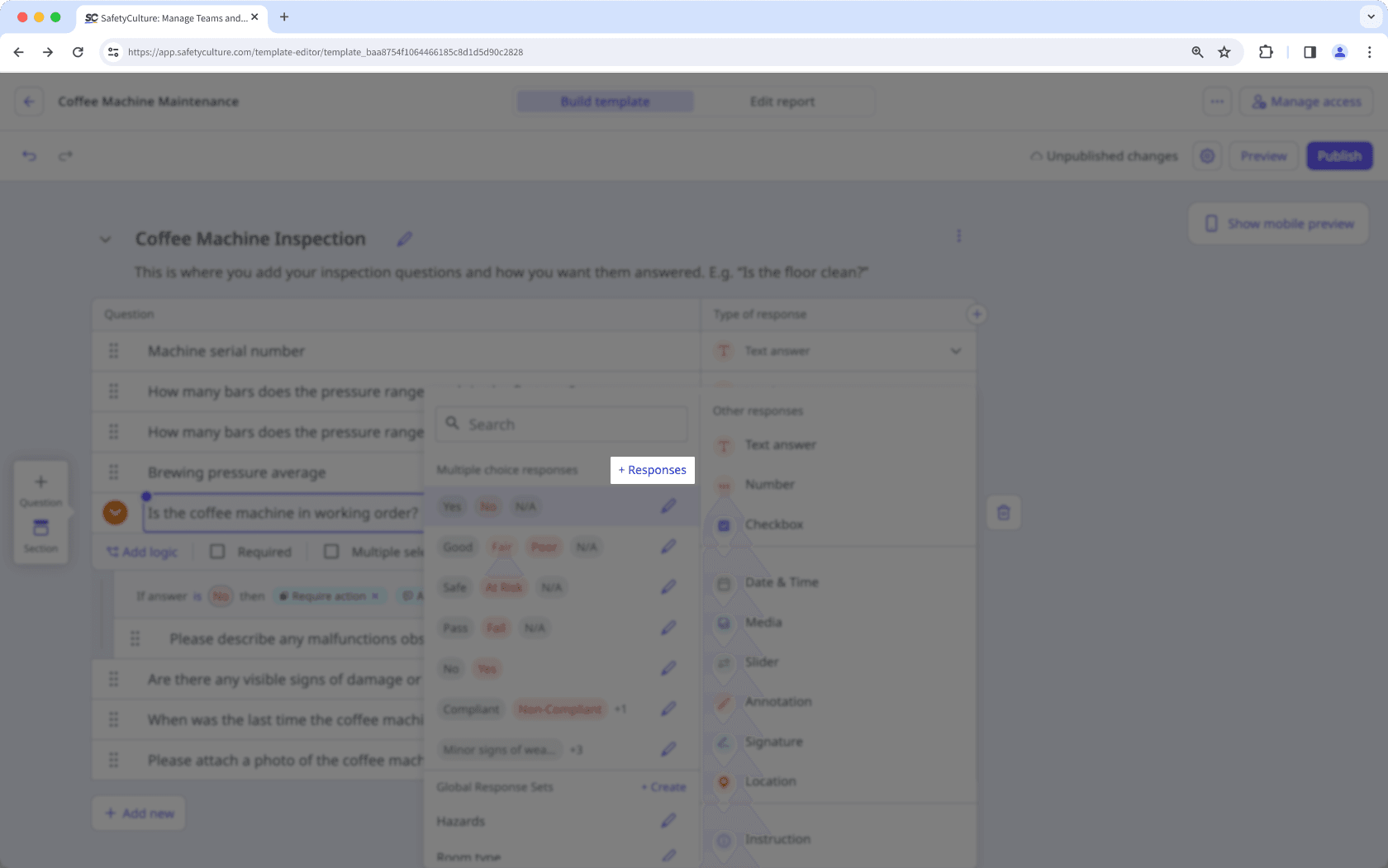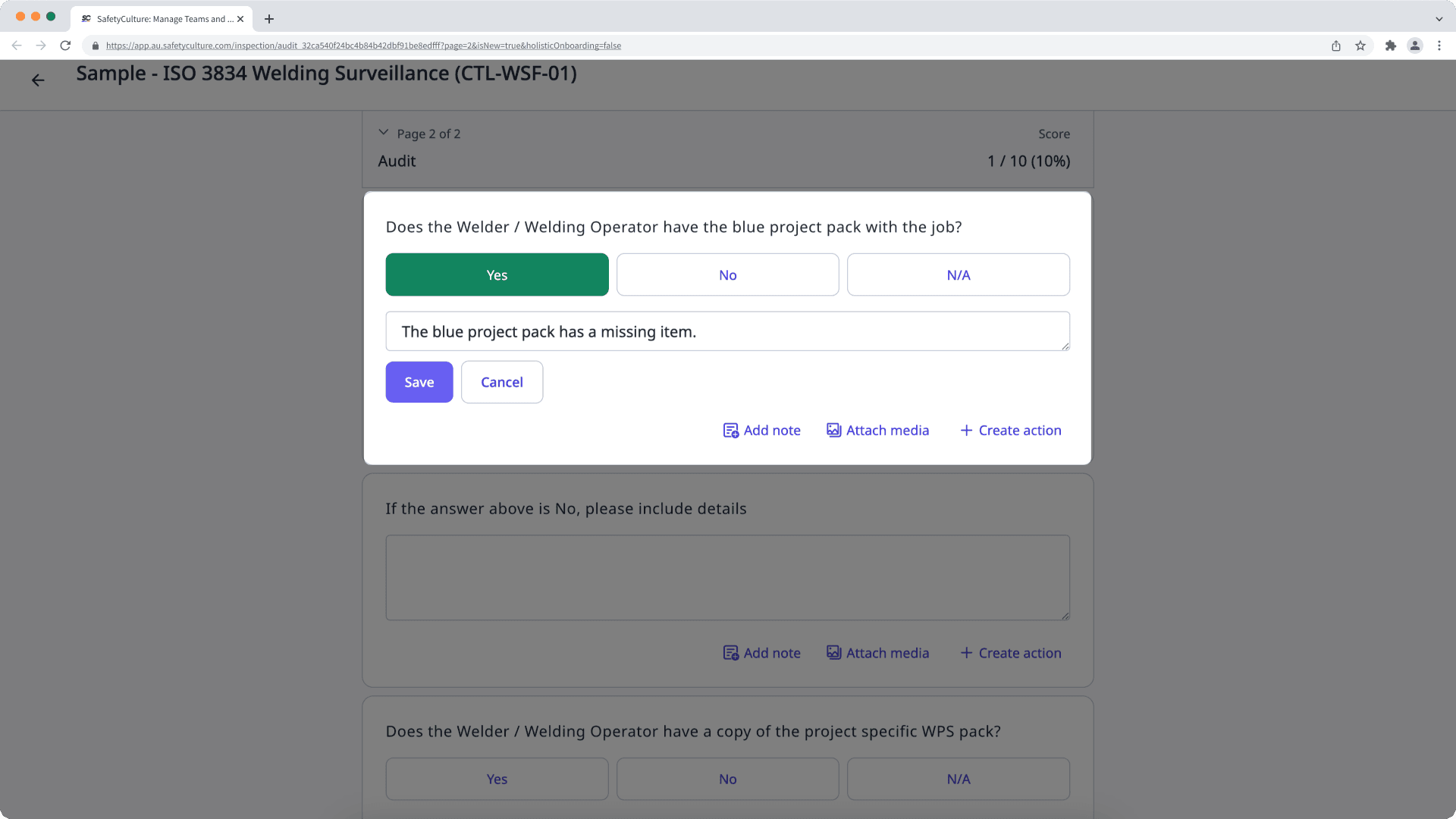Create custom response sets
Learn how to create custom response sets in the Template Editor via the web app and the mobile app.What are custom response sets?
Custom response sets are response sets you can use within a specific template. With SafetyCulture, any new template you create by default includes multiple-choice response sets such as "Yes, No, N/A" for questions, or you can have specific responses to your use case, be it a list of assets or employee names.
You can build your templates using other response types, such as text answer, number, and media.
What you'll need
Custom response sets are template-specific. If you want to create response sets that can be universally used in any template, you can create Global Response Sets instead.
Custom response set options
Each response in a custom response set has the following attributes that can be customized:
Color: Click the circle on the right-hand side of a response to select the color. If you want to use a custom color, you can enter the color hex code in the text field.
Mark as flagged: Check the box if you want to mark a response as a flagged response.
Score: If scoring is enabled for a response set, you have the option to customize the score for a response. Learn more about template scoring.
Published changes made to templates only apply to new inspections moving forward.
Create a custom response set
Select
 Templates in the sidebar or select it in
Templates in the sidebar or select it in More.
Click the template and select Edit template in the side panel.
Select the question you want to create the custom response set for and click
on the right-hand side, under "Type of response".
In the dropdown menu, click
Responses on the right-hand side of "Multiple choice responses".

In the sidebar on the right-hand side, add responses accordingly. If you have a list of responses in a document or note, you can copy and paste the list into a text field to add responses in bulk.
Click Save and apply.
Click Publish on the upper-right of the page to publish the template. If you're not ready to publish the template, you can go back to the templates list and come back when you're ready.
Open the mobile app.
Tap
Inspections in the navigation bar or select it from
More.
Select the Templates tab at the top of your screen.
Tap the template and select
Edit template from the pop-up options.
Select the question you want to create the custom response set for and tap
below the question.
Tap
Responses on the right-hand side of "Multiple choice responses".

Add responses accordingly. If you have a list of responses in a document or note, you can copy and paste the list into a text field to add responses in bulk.
Tap Save and apply.
Tap Publish on the upper-right of your screen to publish the template. If you're not ready to publish the template, you can go back to the templates list and come back when you're ready.
You can use custom response sets when linking responses in templates to automatically populate answers across related questions.
Frequently asked questions
Yes you can! By default, responses are presented as tiles/cards in an inspection. However, if the question or its custom response set has any of the following attributes, the interface would be converted into a dropdown list selection:
The question has "Multiple selection" enabled.
The custom response set has more than 5 responses.
At least one of the responses in the custom response set has more than 30 characters.

It's not possible to delete custom response sets. If you have any suggestions or want to improve custom response sets, please let us know by providing your feedback.
No, you cannot enter a different response, but we have the following alternatives for you to consider:
Add a note: If you’re conducting an inspection and come across a question requiring a different response or further explanation, you can simply add a note. Remember: If the question is required, you still have to pick a response from the given choices first and then add a note so you can complete the inspection.

Add a logic field in the template: If you have a “Conduct, edit” access level for the template, you can add a logic field to your multiple-choice responses. Logic fields allow you to set conditions for certain responses that will trigger outcomes if the conditions are met. For example, users will be asked a follow-up question if they respond “Other” to a specific question. You can also change the trigger to require them to complete an action, provide evidence, or even automatically notify someone.
Was this page helpful?
Thank you for letting us know.